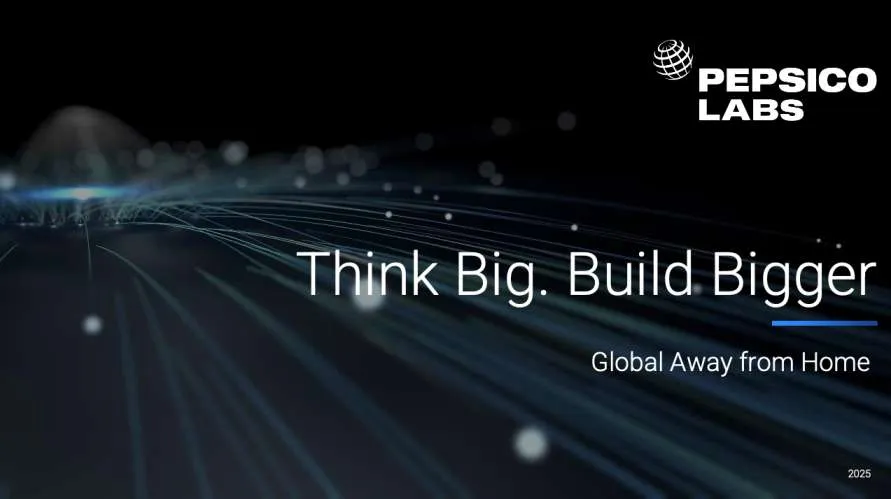How PepsiCo Labs Reshaping With Data
The Problem Nobody Talks About
Here’s the thing about the restaurant industry, it looks simple from the outside. A customer walks in, orders a Pepsi, grabs some snacks, pays, and leaves. Straightforward, right? But behind the scenes, there’s this massive gap between what PepsiCo knows and what they actually need to know to dominate the away-from-home (AFH) channel.
PepsiCo generates enormous revenue through restaurants, fast-casual chains, and food retailers. Yet the company faces a frustrating reality: they’re flying half-blind when it comes to real-time customer sales data, competitive movements, and the actual impact of their marketing investments. Think of it like running a business with a rearview mirror instead of a windshield. You can see where you’ve been, but it’s impossible to react to what’s coming.
This challenge isn’t unique to PepsiCo, but their response to it reveals something important about how mature food and beverage companies are adapting. Through their emerging technology labs, PepsiCo has identified six interconnected problem areas that demand solutions, and they’re actively scouting for innovations to fix them.
Yet the company faces a frustrating reality: they’re flying half-blind when it comes to real-time customer sales data.

The Six-Problem Framework: A Roadmap for Restaurant Revolution
When you strip away the corporate language, PepsiCo’s 2025 AFH strategy boils down to a coherent set of business challenges. Each one represents a revenue opportunity, but they’re all tied together by one thread: data and intelligence.
Intelligent Prospecting
This tackles the bloated lead generation problem. Imagine your sales team spending hours sifting through outdated spreadsheets, manually qualifying leads that might never convert. That’s the current state.
The models PepsiCo uses today rely on static data, lack transparency about why certain prospects are prioritized, and require constant manual tinkering to adapt to new information sources.
What they’re really saying? They want AI-driven solutions that can prioritize leads in real time, explain their reasoning to sales teams, and adapt automatically as market conditions shift.
The goal is fewer dead-end pitches and more conversions among high-probability accounts.
Churn Reduction flips the problem.
Instead of hunting new customers, this focuses on keeping the ones you’ve already got. Here’s where it gets interesting, PepsiCo’s current machine learning models mostly track lagging indicators. They see that an order was lost after the fact.
But what they need is early warning systems that detect behavioral signals before a customer actually churns. A restaurant that suddenly shifts ordering patterns, reduces frequency, or stops purchasing premium products should trigger an alert. Then, instead of sending a generic retention email, PepsiCo wants personalized interventions tailored to what that specific operator actually needs.
It’s the difference between “Hey, come back!” and “We noticed you’ve been struggling with peak-hour beverages, here’s how we can help with that specific challenge.”
Restaurant Value-Added Services
This represents a strategic shift. The AFH landscape is getting crowded with third-party digital providers, point-of-sale systems, online ordering platforms, analytics tools.
Restaurants are overwhelmed by options. PepsiCo’s insight here is that to stay essential, they can’t just recommend other people’s tools. They need to build proprietary services that only PepsiCo can offer. Think dynamic pricing optimization, AI-powered menu recommendations featuring PepsiCo products, or tools that help restaurants drive traffic to first-party ordering channels.
The real play? Target mid-size restaurant groups (50–150 locations) where there’s genuine appetite for these services but not enough scale to build them in-house.
F&B Occasions Expansion
This ventures into culinary territory. This is where seasoning blends become ingredients, beverages transform into mixers, and Pepsi-glazed meats become menu items.
It’s not just flavor anymore, it’s about embedding PepsiCo products so deeply into the restaurant experience that they become non-negotiable parts of the menu.
The challenge? Scaling these concepts from the chef’s imagination to hundreds of locations while maintaining quality consistency and operational simplicity.
Innovation equipment, AI-powered menu optimization, and rapid prototyping tools all play roles here.
A&M ROI Measurement
This addresses the ghost problem in marketing.
PepsiCo pours millions into AFH marketing, media placements, in-store promotions, experiential events. But here’s the uncomfortable truth: they can’t reliably measure which activities actually drive sales. Without clear ROI attribution, budgets get allocated based on habit, not impact.
They need sophisticated analytics that can trace a connection between a point-of-sale promotion and actual customer behavior, account for both direct sales impact and long-term brand halo effects, and work consistently across different channels and customer types.
Data Whitespaces
This is the foundation. All the other problems stem from not having reliable, real-time data about what customers are actually buying, what competitors are doing, and how market conditions are shifting.
PepsiCo needs creative ways to collect competitive intelligence, access POS data at scale, and build systems that make it easy for non-technical teams to turn raw data into actionable insights.
Why This Matters (And Why It’s Harder Than It Looks)
On the surface, these sound like straightforward tech problems. Get better data. Build smarter models. Deploy AI agents. But here’s where the complexity kicks in: solving these problems at scale across the AFH channel is genuinely hard.
Consider data integration alone. PepsiCo needs to pull information from hundreds of different POS systems, each with their own quirks and formats. Some restaurants use Toast, others use Square, some still rely on legacy systems from the early 2000s. Now layer on competitive intelligence that comes from dozens of sources, fragmented operator data from direct and indirect channels, and the challenge becomes massive. It’s not just a technical problem, it’s a logistics and partnership problem.
On the surface, these sound like straightforward tech problems. Get better data. Build smarter models. Deploy AI agents. No this is not the case.
Then there’s the adoption barrier. Any solution PepsiCo implements has to work not just for their internal teams but for restaurant operators too. If a solution requires extensive training, adds complexity to restaurant operations, or increases costs without clear ROI, it’ll get rejected. Restaurants operate on thin margins. They’re not going to adopt something unless it’s low-lift, affordable, and demonstrably valuable.
And perhaps most importantly, there’s the integration requirement. Whatever solutions PepsiCo adopts have to play nicely with their existing systems, their CRM, sales platforms, and data infrastructure. A brilliant AI agent for lead prioritization that can’t connect to the sales platform is basically worthless.
The Real Opportunity: Turning Data Into Decision-Making
What’s genuinely interesting about PepsiCo’s approach is that they’re not just looking for technology vendors. They’re looking for partners who understand the AFH business fundamentally. They want solutions that can be deployed across multiple channels, whether you’re selling to high-volume QSRs or independent restaurants, and that can adapt over time as market conditions change.
For example, intelligent prospecting isn’t just about a better lead scoring algorithm. It’s about an AI system that explains to a sales rep why Restaurant X is a priority right now, can incorporate new data sources as they become available, and measures its own effectiveness over time. Real-time data combined with predictive analytics combined with explainability, that’s the trifecta.
Similarly, churn reduction moves beyond “here’s a risk score.” It requires continuous monitoring, behavioral pattern recognition, and the ability to recommend specific interventions for specific customers. A high-volume chain that’s reducing orders needs a different intervention than an independent restaurant that’s experimenting with a competitor. Generic solutions don’t cut it.
The Competitive Landscape: Why Now?
The AFH channel has historically lagged in digital innovation compared to retail:
- Restaurants have been fragmented, data-poor, and resistant to change.
- But market pressures are forcing that to evolve.
- Consumer expectations around personalization and convenience are rising.
- Third-party platforms are creating new points of friction.
- Margins are tightening.
n that environment, PepsiCo’s recognition that they need to innovate faster isn’t optional, it’s survival-oriented.
What’s Next: Building the Connected Ecosystem
Here’s what PepsiCo is really trying to build: a connected ecosystem where data flows freely, decisions are made faster, and value accrues both to PepsiCo and to the restaurant partners they work with. It’s ambitious. It requires technology. It requires data partnerships. It requires cultural shifts within sales teams who’ve been operating in a certain way for years. But it’s also where the industry is heading.
Final Thoughts
The companies that emerge as leaders in AFH over the next few years will be those that moved decisively on these problems. PepsiCo’s willingness to publicly articulate these challenges through their innovation labs signals something important: they’re serious about solving them, and they’re open to collaboration. For tech innovators, that’s opportunity. For their competitors, it’s a signal that the competitive dynamic in foodservice is about to change.
The best, fastest agentic notebook 2026? Livedocs.
- 8x speed response
- Ask agent to find datasets for you
- Set system rules for agent
- Collaborate
- And more
Get started with Livedocs and build your first live notebook in minutes.
- 💬 If you have questions or feedback, please email directly at a[at]livedocs[dot]com
- 📣 Take Livedocs for a spin over at livedocs.com/start. Livedocs has a great free plan, with $10 per month of LLM usage on every plan
- 🤝 Say hello to the team on X and LinkedIn
More case studies coming up!

